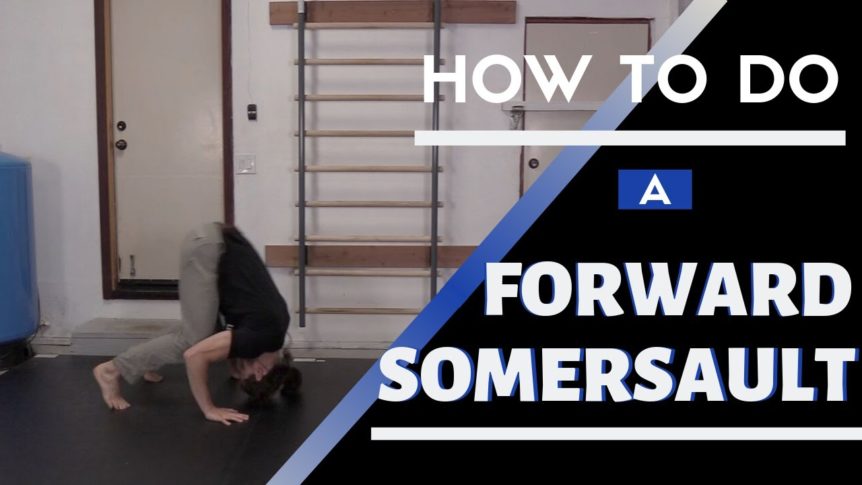All of fitness is based on progression.
Sadly, when it’s not as simple as adding five pounds to a lift, or even a rep at a time, many people don’t know how to do it.
This is the case with rolling.
In this new video, I cover how to get started with the forward somersault.
I consider this a basic human movement skill that everyone should be able to do just for health purposes.
But that is just the beginning. From there I show a variety of ways you can take the forward somersault and make it tougher to do.
The somersault is also known as a forward roll. In it, you’ll be going straight over your head and spine.
- Squat down on the ground.
- Place your hands with the elbows bent about shoulder width or a bit wider on the floor.
- Dip forward as you tuck your head.
- Touch the top of your head, or slightly to the rear of that, to the ground as you start to roll over.
- As your hands and head come down you can kick off with the legs.
Round your neck and back completely so each part, in turn, touches the ground without anything hitting flat. - Use the forward momentum to come to your feet.
Progressions from here include limited or changed use of hands. These include
- Hold hands on shins the whole time
- Arms folded in front
- Clasping hands under thighs
- Hands held to sides
- Grasping the toes
- Crossed legs
- One leg
- One leg without hands!
This is just one video of seven that comes with the new Strength Health Mind Power Inner Circle newsletter, Basic to Advanced Rolling for All Humans Plus Flow Rolling. If you’re not a member yet, you can subscribe here and get this issue before it goes to print tomorrow.


Comments
I am not sure if it a difference with what you called a summersault., and what I would call a forward roll (from my martial arts experience), but I would never teach someone to hit the ground with their head. In my opinion, the possibility for injury is too high.
If you’re on a padded surface it’s not a problem. Look at all gymnastics too see how common it is.